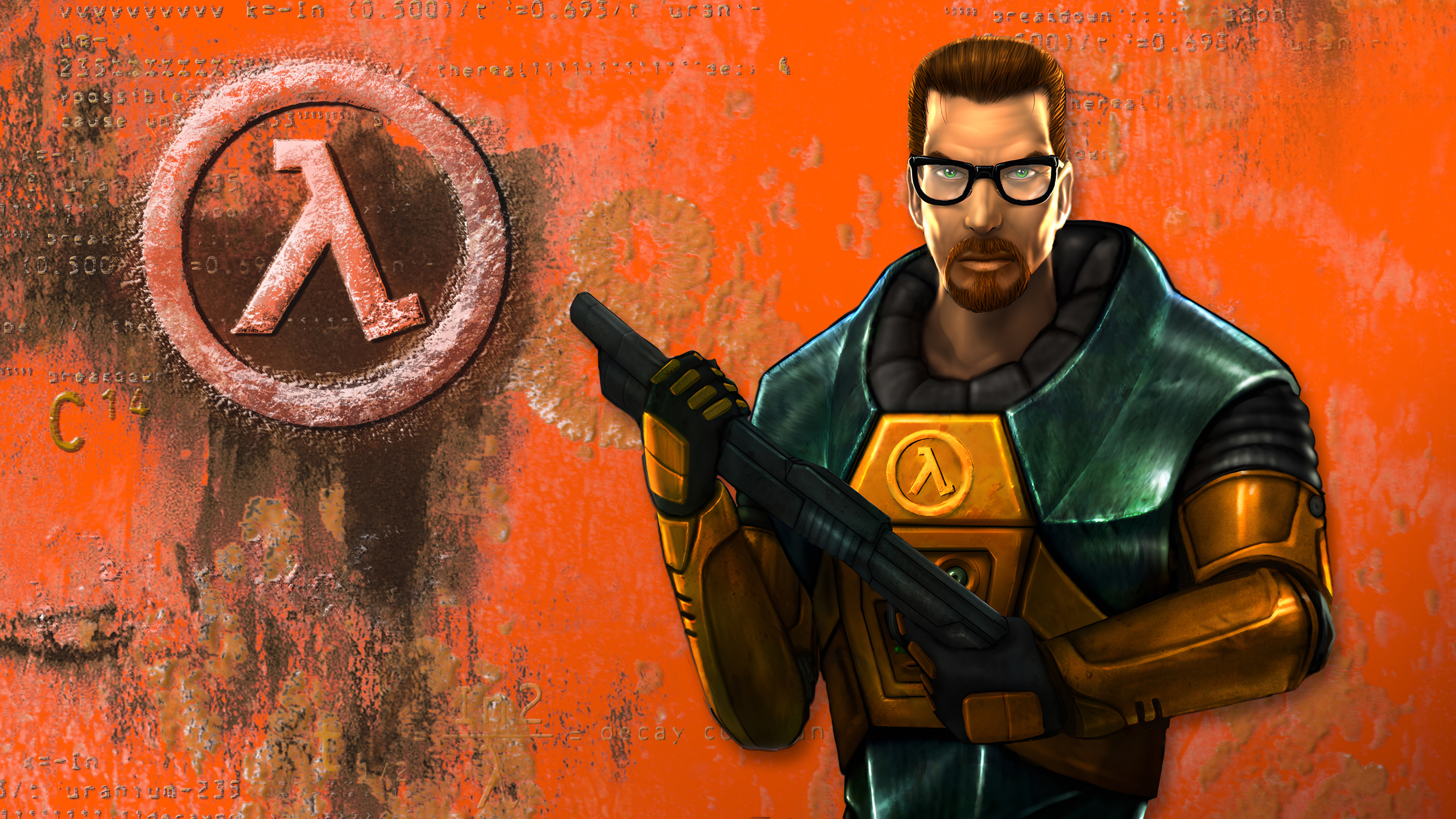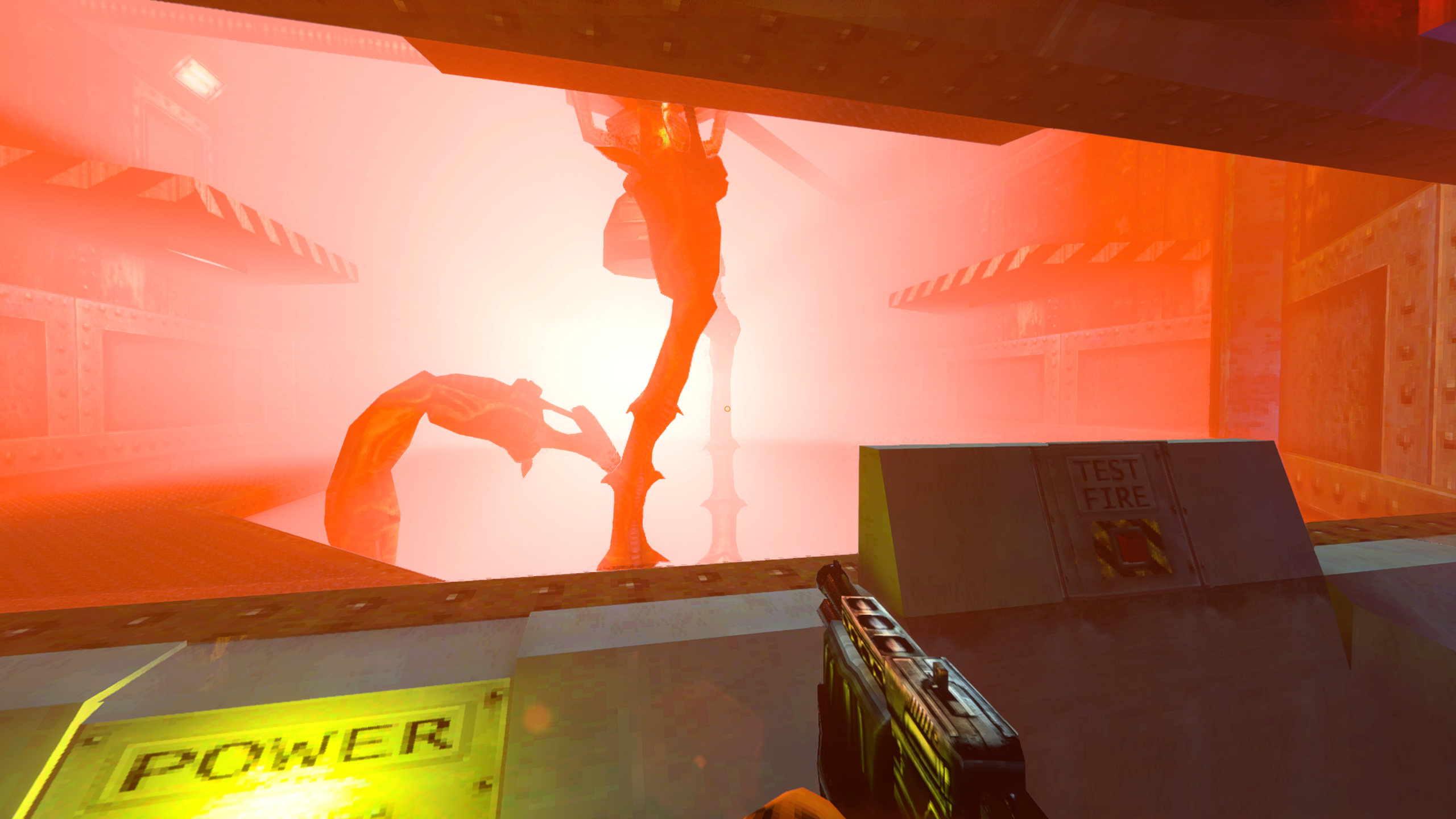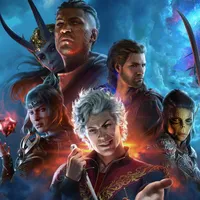Former Valve exec says the company struggled to sell Half-Life until coming up with the ultimate 'one simple trick' of marketing manoeuvres: slapping a 'Game of the Year' sticker on the box
"Okay, so you've done the game. Now what happens?"

One of this year's GDC highlights was a talk by Monica Harrington, a founding member of Valve and the company's first chief marketing officer, who went over her history with the company that brought us Half-Life and Steam.
There's a whole bunch in Harrington's recollections to pick out: like when she gave her nephew some money for school supplies, found out he'd spent it on a CD-ROM copier thanks to "a lovely thank you note", and realised DRM was going to be very important.
In a later sit-down chat with PCG's Ted Litchfield, Harrington expanded on some of the other challenges faced by Valve in the late 1990s, including the fact that no-one seemed to want to pay attention to a new game called Half-Life. You can't blame them really: The game came in an orange box covered in a messy graffiti-style design with that Lambda symbol. Aesthetically I don't mind it, but I can see why it wasn't flying off the shelves.
Harrington realised that Valve was in trouble, and not only that, it had to rely on publisher Sierra to keep up its side of the bargain with distribution and in this case a reissue of the game with new box art and an innovation: the "Game of the Year" sticker. Half-Life had been so well-reviewed in so many outlets this was a legitimate claim, and at first was a sticker applied to existing inventory. Soon Sierra would also publish the game with new box art showing Gordon Freeman which, while perhaps not as pure as the original, definitely strikes me as more sellable.
Long story short, it worked. Following up with Harrington after her talk, PCG asked about this particular "game of the year" marketing technique, which nowadays is not just ubiquitous but, in some instances, can feel a little un-earned (I remember Lords of the Fallen had a GOTY edition, which was surely only the case for the lead designer's mum). Was this another Valve first?
"I think so," said Harrington. "I mean certainly it had never been used in that way. To my knowledge, there was never a case where a particular game in a given year just got so many accolades so quickly. There were ones where, in hindsight, people would say 'Oh, that was a pivotal game.' But it was unusual for that much of a plan to happen so quickly around this same thing."
This is one of those weirdly full-circle moments for Valve where, even as it was dealing with a problem in the late '90s, it was also foreshadowing some of the challenges that developers would later face on its own platform. PCG asked Harrington what she saw as the most fundamental changes that digital distribution had brought to marketing games over her career.
Keep up to date with the most important stories and the best deals, as picked by the PC Gamer team.
"One of the things that, to me, seems almost kind of poignant is when I talk to people here, they talk about the real challenge of trying to break out from the clutter," said Harrington. "So now there's tens of thousands of games released each year, there may well be more than that, but it's really hard to get people to pay attention."

Harrington suggested that being forced to launch a game ready for retail, as opposed to just uploading some files and cover art to a distribution platform, eliminated much of that "clutter" in Half-Life's day.
"Maybe because there isn't the same kind of building process that you needed for CD-ROM distribution where you actually had to go through the effort of getting the boxes shipped out and stocked and all of that other stuff. It was almost different, because there was a pre-screening that happened earlier, right? A lot of games didn't get developed because they didn't get that backend right. And so now a bunch of games are getting developed because there wasn't that kind of gatekeeper role that was keeping them from actually happening, but now they've got that huge challenge of, 'okay, so you've done the game. Now what happens?'"
It's a drum that indie advocates often beat: If you're not thinking about marketing your game until you're ready to release it, you've probably already missed the boat. And this is something that used to be baked-in to the process of making a game at a much earlier stage, albeit at a time when game-making wasn't as democratised as it is now.
Harrington didn't offer any big answers, though she did go on to talk about the importance of games that don't ship, citing a product that never made it out of the door at Microsoft (where she also worked) because she "couldn't ask the people who worked on marketing that game to position it or to say untrue things about it… you can't use up your credibility, and you can't lose it."
There's plenty more gold from Harrington's various stories, including an intriguing alt-history where, after Half-Life, Valve got out of the games business entirely. Gabe Newell had his eyes on a social network in the '90s that "was not in a games context at all"—meaning Valve-owned social media could've been a very real thing.
2025 games: This year's upcoming releases
Best PC games: Our all-time favorites
Free PC games: Freebie fest
Best FPS games: Finest gunplay
Best RPGs: Grand adventures
Best co-op games: Better together

Rich is a games journalist with 15 years' experience, beginning his career on Edge magazine before working for a wide range of outlets, including Ars Technica, Eurogamer, GamesRadar+, Gamespot, the Guardian, IGN, the New Statesman, Polygon, and Vice. He was the editor of Kotaku UK, the UK arm of Kotaku, for three years before joining PC Gamer. He is the author of a Brief History of Video Games, a full history of the medium, which the Midwest Book Review described as "[a] must-read for serious minded game historians and curious video game connoisseurs alike."
You must confirm your public display name before commenting
Please logout and then login again, you will then be prompted to enter your display name.


